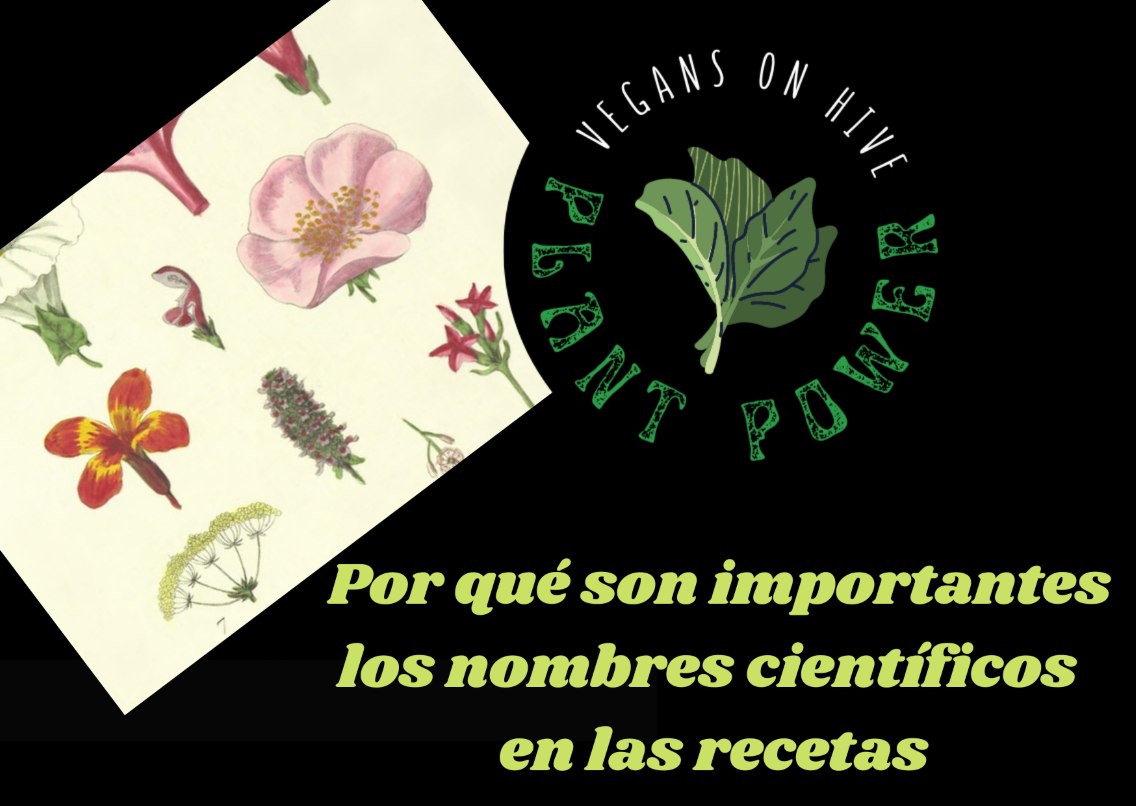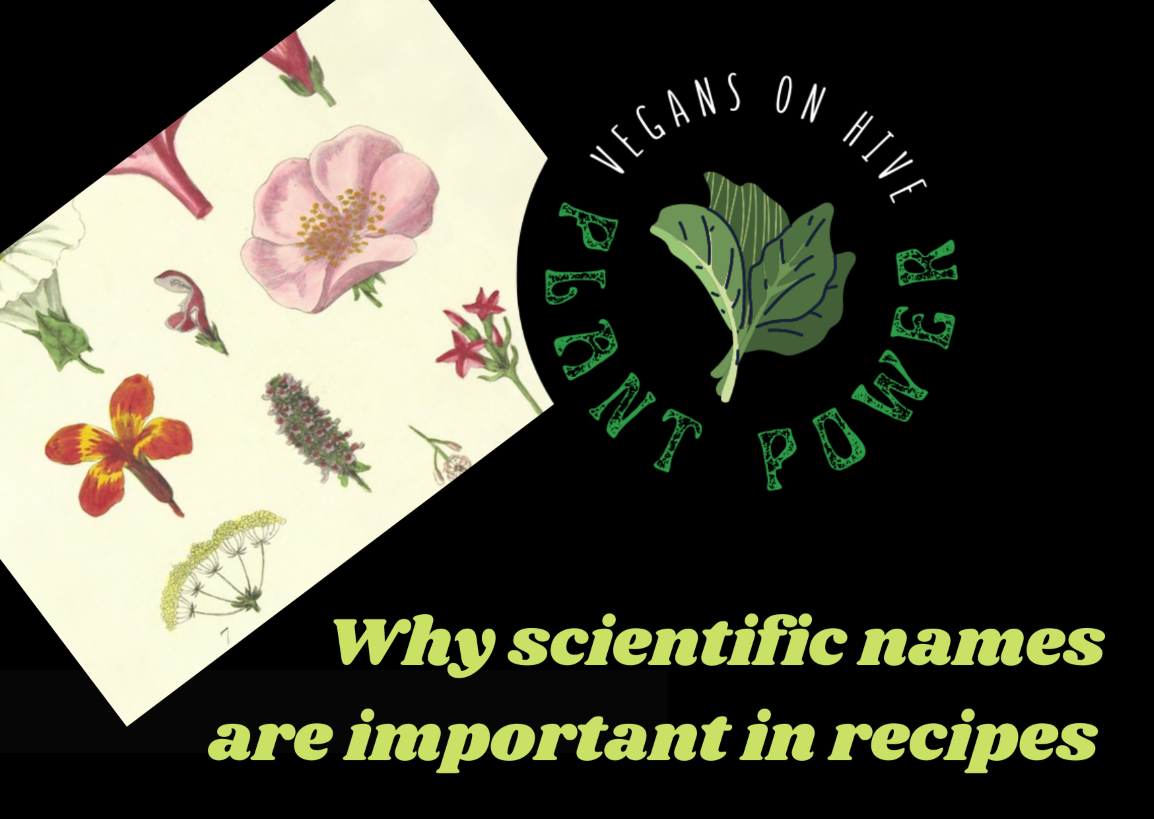Nowadays, the content we find on the Internet can be read anywhere in the world, thanks to online translators, which instantly translate any language. This way, the posts we create within Hive can reach anyone anywhere in the world, making them universal. However, in the specific case of recipes, there are certain aspects that translators cannot resolve, such as the names of fruits and vegetables that are endemic to a locality or region.
According to the above, there are certain fruits and vegetables that are not found throughout the world, but are native to a specific place, and therefore, receive a very unique name, in a particular language or dialect, which is why they are unknown to most people, especially if the reader is foreign to that geographical area or culture. Hence, the use of SCIENTIFIC NAMES is essential so that they can be appropriately identified by those who wish to do so.
By this, we don't mean that it's necessary to include the scientific name of all ingredients used in recipes, but only of those that are less well-known. For example, onions, garlic, tomatoes, pumpkins, carrots, potatoes, cilantro, apples, watermelon, mangoes, strawberries, etc.; these are vegetables widely known throughout the planet, and any reader can identify them just by looking at them. But there are other fruits, vegetables, tubers, leaves, etc., that only grow in certain areas of the planet and are unknown to people who live outside of that area. This becomes even more complicated if the name of those vegetables is in a native language. This is where the use of SCIENTIFIC NAMES allows anyone to search the web for the characteristics of that ingredient, learn about it, and even be able to substitute it with something similar in preparations, in case they can't buy or obtain it.
For these reasons, when you, dear members of the vegan family, publish recipes that include a little-known ingredient (vegetable, fruit, special), please include its scientific name. This doesn't need to be included in the title; you can include it in the text and in the list of ingredients, next to the common name, in parentheses. This way, you can achieve better understanding and success with your recipes.

As you can see, the use of scientific names allows for disambiguation of information and correct identification of ingredients. A simple step can make your recipe more complete


ESPAÑOL
 [Foto por British Library]( https://unsplash.com/es/fotos/ilustraciones-de-flores-de-colores-variados-MS0JT4RC9Ls)
[Foto por British Library]( https://unsplash.com/es/fotos/ilustraciones-de-flores-de-colores-variados-MS0JT4RC9Ls)
¡Hola amantes de los alimentos basados en plantas, donde quiera que estén en el mundo y/o la galaxia!
En la actualidad, el contenido que podemos encontrar en Internet, puede ser leído en cualquier rincón del planeta, esto gracias a los traductores en línea, que traducen inmediatamente cualquier idioma. De este modo, las publicaciones que creamos dentro de Hive, puede llegar a cualquier persona en cualquier parte del mundo; haciéndolo universal. Sin embargo, en el caso específico de las recetas, hay ciertos aspectos que no pueden ser resueltos por los traductores, como es el caso de los nombres de aquellas frutas y vegetales que son endémicos de una localidad o región.

De acuerdo a lo anterior, hay ciertas frutas y vegetales que no se encuentran en todo el mundo, sino que son autóctonos de un sitio específico, y que por tanto, reciben un nombre muy singular, en un idioma o dialecto en particular, razón por la cual resultan desconocidos para la mayoría de las personas, especialmente si el lector es ajeno a esa zona geográfica o a esa cultura. De allí que el uso de LOS NOMBRES CIENTÍFICOS, sea fundamental para que puedan ser apropiadamente identificados por aquellas personas que así lo deseen.

Con esto no queremos decir que sea necesario colocar el nombre científico de todos los ingredientes que se usan en las recetas, sino sólo de aquellos que son muy poco conocidos. Por ejemplo, las cebollas, ajos, tomates, calabazas, zanahorias, papas, cilantro, manzana, sandía, mangos, fresas, etc.; estos son vegetales ampliamente conocidos en todo el planeta, y que con sólo verlos, cualquier lector puede identificarlos; pero hay otras frutas, vegetales, tubérculos, hojas, etc., que sólo crecen en ciertas áreas del planeta, y que no son conocidos por las personas que habitan fuera de ese lugar; y esto se complica aún más, si el nombre que tienen esos vegetales está en una lengua autóctona. Es allí cuando el uso de LOS NOMBRES CIENTÍFICOS permiten a cualquier persona buscar las características de ese ingrediente en la web, conocerlo e, incluso, poder sustituirlo por algo similar en las preparaciones, en caso de que no pueda comprarlo o conseguirlo.

Por estas razones, cuando ustedes, queridos miembros de la familia vegana, publiquen recetas en donde incluyan algún ingrediente (vegetal, fruta, especial), que sea poco conocido, incluyan el NOMBRE CIENTÍFICO del mismo. Esto no es necesario hacerlo en el título, lo pueden incluir en el texto y en la lista de ingredientes, al lado del nombre común, entre paréntesis. De este modo podrán lograr una mejor comprensión y éxito en sus recetas.

Como pueden ver, el uso de LOS NOMBRES CIENTÍFICOS permitenla desambigüación de la información, y una correcta identificación de los ingredientes. Un simple paso puede hacer más completa tu receta

RELATED POSTS / POSTS RELACIONADOS
+ [Rules for food preparation / Reglas para la preparación de los alimentos (ENG / SPN)](https://peakd.com/hive-180569/@plantpoweronhive/rules-for-food-preparation-reglas-para-la-preparacion-de-los-alimentos-eng-spn)
+ [(Eng / Spn) Disinfection of fruits and vegetables](https://peakd.com/hive-180569/@sirenahippie/eng-spn-disinfection-of-fruits-and-vegetables)
+ [The etiological agents of the most important food-borne diseases (Part V: PARASITES)](https://peakd.com/hive-180569/@plantpoweronhive/the-etiological-agents-of-the-most-important-foodborne-diseases-part-v-parasites)
















